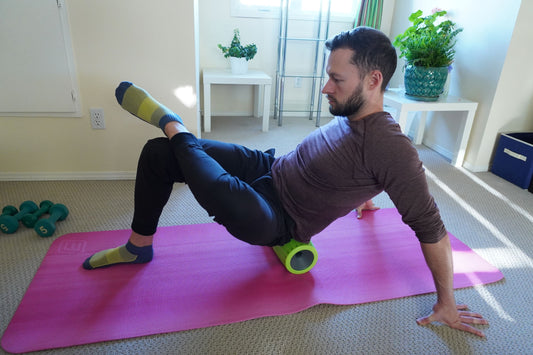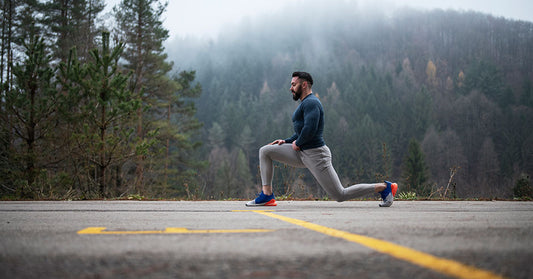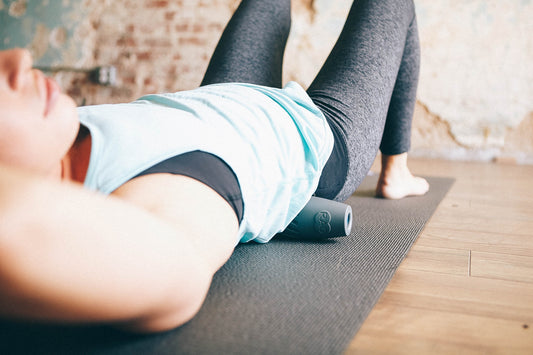When you arrive at the gym, there’s probably a lot on your mind — from stress over neglected emails to excitement about an upcoming concert. While you certainly get bonus points just for showing up, if you’re working out while distracted or haven’t been trained on proper movements, your workout could lead to unintended consequences.
“Often, these behaviors lead to lackluster, ineffective and sometimes dangerous workouts,” says Jonathan (JJ) Jordan, a NASM-certified personal trainer and nutrition coach in the heart of San Francisco’s Financial District. “It’s imperative to understand proper form when performing a deadlift or plank, and you won’t achieve that if you’re playing on your phone or mimicking a fellow gym-goer who, unbeknownst to you, has poor form.”
Based on years of observations, Jordan has identified the main moves people execute incorrectly time and again — and provides instruction on how to perform them properly:
Rounding your back during a deadlift.
For the general population, rounding your back (e.g., hunching over, dropping your shoulders forward and making a “C” shape with your spine) may lead to throwing your back out or herniation. A deadlift is a very complex movement — a symphony of coordination between your hips, knees and back.
Do this: Start by creating tension in all your core, back, shoulder and glute muscles by gently pulling up on the bar before leaving the ground. Lock in your lats by “bending the bar” with your hands. Keep your neck neutral (i.e., don’t look up — keep it in line with the rest of your spine). As you lift, keep that tension the entire time and carefully set the weight down versus just dropping it.
Knees collapsing in during a squat.
Between sitting all day at the office, on your commute to work and on your couch at night, glutes get weak and lazy. One sign of “sleepy glutes” is your knees collapsing inward when you squat, deadlift or lunge.
Do this: Do some side steps with a PT band and some basic glute bridges before you work legs. Create tension in your legs by “screwing your feet into the ground” or by slightly externally rotating your femur in your hip socket and then move slowly, holding onto that tension throughout the movement to keep your knees in line with your ankles.
Shrugging shoulders during pulling exercises.
Working your back and arms while doing pulling movements — like a seated row, lat pulldown or dumbbell — is awesome for your posture. But oftentimes, people shrug their shoulders up by their ears, which irritates the neck and over-engages the upper traps (which, for most of us, are already overworked).
Do this: Before you pull, lock your shoulders down (depressing them) and practice holding them down the entire time to strengthen the lower traps. Also, remember to keep your chin tucked (no turtle neck).
Slamming your feet during box jumps.
Box jumps are great for power development, but why does it seem like everyone is intentionally slamming their feet as hard as possible? It’s terrible for your joints and ligaments.
Do this: Instead, try to land as softly and quietly as possible. Focus on making as little noise as possible. How softly? Try setting a water bottle on the box and land without having the water ripple.
Arching your back during kettlebell swings.
Swings are great for burning calories and strengthening your back, core and legs — but not if you’re hyperextending or arching your lower back. Arching your back, especially with load, puts the emphasis off the intended muscles of glutes and upper back and causes strain in the lower-back muscles. You not only risk pulling a lower-back muscle, but you also could herniate or rupture a disk.
Do this: Use the power of your hip extension to propel the kettlebell up and use your arms to gently manage the movement. Focus on flexing and fully extending your hips without using your lower back (so that it’s all about the glutes and hamstrings).
Jelly arms and shrugged shoulders while running.
Jelly arms can cause you to use the wrong muscles and can hurt your posture. Many folks are one shrug away from pulling an upper trap and injuring their neck.
Do this: When running, engage your core, hinge forward slightly, and rather than swinging your arms frantically, think about gently punching your elbows behind you. If you run with your arms up by your chest, consider dropping them to conserve energy and letting your fingers gently graze your short pockets while keeping your elbows punching back.
Dropping your hips/arching your back during a plank.
When planking, if you feel pain or pressure in your lower back, odds are you’re dropping your pelvis too close to the floor and arching/extending your lumbar spine.
Do this: Pull your hips up and engage your abdominals by bracing (versus sucking in). Sometimes it helps to imagine being punched in the stomach to get a good core brace.
Loosey-goosey arms during strength moves.
When doing most exercises, you want to create and hold onto tension instead of letting your limbs flop around. Why? It’s risky and also ineffective for building strength and efficiency.
Do this: Don’t let the weights control your movement; let the tension you create guide the movement smoothly and deliberately. This may mean reducing the weight if you’re not able to control the entire movement.
Written by Jill Schildhouse for Oxygen Magazine and legally licensed through the Matcha publisher network. Please direct all licensing questions to legal@getmatcha.com.
Improve your form and your posture with RAD Mobility and Recovery tools. Take your warm-ups and cool-downs to a whole new level!



















